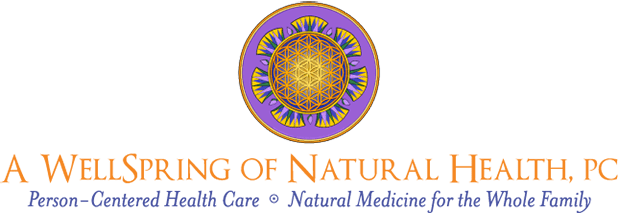By Kerry Bone
From American Holistic Health Association
The things you read about in these pages every month certainly go a long way in helping you avoid major health problems. But the fact is, for one reason or another, many of us will need to undergo surgery at some point. And it’s important to ensure that your health is at peak performance through what can be quite an ordeal.
Over the years I’ve found that the use of a few simple herbs can help to maintain well-being and optimize healing, setting you up for success before, during, and after surgery.
Minimizing the effects of general anesthesia
The first thing on your pre-surgery to-do list is to make sure that any herbs you’re using are safe–and particularly that they don’t interact with anesthetic drugs. I wrote an article a few years ago, in the November 2004 issue, called Surgery and herbs: Do they mix? The basic advice I gave in that article is to stop taking all herbs about one week prior to surgery as a cautious, conservative approach. The exception is milk thistle, which can help offset one of the most debilitating aspects of surgery: the side effects of general anesthesia.
Based on what I’ve seen in my own patients, the longer the surgical procedure, and hence the longer they’re under general anesthesia, the more likely it is that they’ll experience ill effects. But milk thistle (Silybum marianum) reduces that risk by minimizing impact of general anesthesia on the whole body-especially the liver. I recommend starting the herb (in concentrated silymarin extract tablet form) about three weeks prior to surgery. Continue taking it right up to the day before surgery and then pick up right where you left off as soon as possible afterwards.
The dosage amounts depend on the anticipated length of the procedure (and the time you’ll be under general anesthesia). For surgery up to two hours, I recommend 600 mg a day, and you should continue taking it for four weeks after surgery. If the surgery takes between two and four hours, I suggest taking 800 mg a day, and then continuing that dose for six weeks after surgery. And for surgery more than four hours long, I still recommend taking 800 mg a day, but continue that dose each day for two to three months post-surgery.
Keep in mind that milk thistle primarily protects the liver against toxic insult and is very safe. In fact, there’s no evidence to suggest that it interacts with drugs by speeding up the rate that the liver metabolizes them, so it won’t adversely interact with the anesthetic drugs.1
Boost-and even speed up-your body’s own healing powers
If you stop to think about it, without the miracle of healing, all surgery would be lethal. So enhancing the healing response should be a major priority for any patient who has just undergone surgery.
Immune support is one of the key aspects of improving healing. Major surgery also suppresses natural killer (NK) cell activity.2 These two factors make Echinacea root the ideal herb to use post-surgically, given what we now know about this its ability to boost innate immunity and NK cell production and activity.3 I recommend between 2.5 and 5 g of good quality Echinacea root per day, depending on the severity of the surgery and the risk of infection.
But equally important is the use of herbs that promote blood flow to and connective tissue production in areas that have been operated on. Grape seed extract has a number of actions related to healing, including the support of connective tissue by protecting collagen and elastin.4 And in clinical trials, grape seed extract has been shown to support microcirculation and improve capillary resistance.5, 6 It also improves venous function, reducing edema (swelling) and improving venous tone, which helps reduce the risk of post-surgical deep vein thrombosis (DVT).7, 8 I recommend around 100 to 150 mg of grape seed extract per day.
There is also clinical evidence that suggests Ginkgo biloba leaf extract helps improve microcirculation.9, 10 It combines well with grape seed extract, so I typically recommend 100 to 150 mg per day of a 50:1 leaf extract.
Like grape seed extract, gotu kola (Centella asiatica)also helps strengthen veins and capillaries, so it’s likely that it can help minimize the risk of post-surgical DVT as well.11 But the area where this underestimated herb really shines is wound healing. In fact, it’s been the subject of numerous clinical trials that testify to its ability to boost healing-even when all else has failed.12, 13
The production of new connective tissue is probably the most important aspect of healing, and gotu kola is the only herb that stands out in this area.
Clinical trials have established that the active fraction from the herb improves microcirculation, production of connective tissue, and overall wound healing.14, 15, 16, 17 In fact, studies have shown that it actually speeds up the healing process, especially in terms of the production and strengthening of connective tissue.18, 19
These effects have been noted after various surgical procedures20, 21 and other traumatic injuries.22 And clinical trials have also found that gotu kola helps correct and prevent the formation of scars.23
The daily doses of gotu kola that I suggest following surgery contain 150 to 300 mg of the active fraction known as triterpenes. This corres-ponds to around 7.5 to 15.0 g per day of original starting leaf.
References
1 Mills S, Bone K (ed). The Essential Guide to Herbal Safety. Elsevier Churchill Livingstone, St Louis, 2005, pp 594-596.
2 Schink M, Troger W, Dabidian A, et al. “Mistletoe extract reduces the surgical suppression of natural killer cell activity in cancer patients: a randomized phase III trial.” Forsch Komplementarmed 2007; 14(1): 9-17
3 Miller SC. “Echinacea: a Miracle Herb against Aging and Cancer? Evidence In vivo in Mice.” eCAM 2005; 2(3): 309‚Äì314
4 Robert AM, Savoldelli M, Legeais JM, et al. “Effect of procyanidolic oligomers on corneal collagen of rabbits treated by excimer laser photoablation.” Biomed Pharmacother 2006; 60(3): 113-120
5 Dubos G, Durst G, Hugonet R, et al. Rev Geriatrie 1980; 5(6): 302-305
6 Dartenuc JY, Marache P, Choussat H. Bordeaux Med 1980; 13(18): 903-907
7 Costantini A, De Bernardi T, Gotti A. “[Clinical and capillaroscopic evaluation of chronic uncomplicated venous insufficiency with procyanidins extracted from vitis vinifera].” Minerva Cardioangiol 1999; 47(1-2): 39-46
8 Royer RJ, Schmidt CL. “[Evaluation of venotropic drugs by venous gas plethysmography. A study of procyanidolic oligomers (author’s transl)],” Sem Hop 1981; 57(47-48): 2009-2013
9 Jung F, Mrowietz C, Kiesewetter H, et al. “Effect of Ginkgo biloba on fluidity of blood and peripheral microcirculation in volunteers.”¬†Arzneimittelforschung 1990; 40(5): 589-593
10 Chung HS, Harris A, Kristinsson JK, et al. “Ginkgo biloba extract increases ocular blood flow velocity,”¬†J Ocul Pharmacol Ther 1999; 15(3): 233-240
11 Cesarone MR, Incandela L, De Sanctis MT, et al. “Flight microangiopathy in medium- to long-distance flights: prevention of oedema and microcirculation alterations with total triterpenic fraction of Centella asiatica.” Angiology 2001; 52(Suppl 2): S33-37
12 Chakrabarty T, Deshmukh S. “Centella asiatica in the Treatment of Leprosy.” Sci Culture 1976; 42(11): 573
13 Nebout M. ‚Äú[Results of a controlled experiment of the titrated extract of Centella asiatica in a leper population with perforative foot lesions].” Bull Soc Pathol Exot 1974; 67(5): 471-478
14 Belcaro G, Laurora G, Cesarone MR, et al. “Efficacy of Centellase in the treatment of venous hypertension evaluated by a combined micro-circulatory model.” Curr Ther Res 1989; 46: 1,015-1,026
15 Grimaldi R, De Ponti F, D’Angelo L, et al. “Pharmacokinetics of the total triterpenic fraction of Centella asiatica after single and multiple administrations to healthy volunteers. A new assay for asiatic acid.” J Ethnopharmacol 1990; 28(2): 235-241
16 Tincani GP, Riva PC, Baldini E. “[Cutaneous Enzymatic Activity In the Processes of Regeneration. I. Effect of asiaticoside on Leucine Aminopeptidase (LAP) and the Sulfhydryl Groups in Normal Subjects].” G Ital Dermatol 1963; 104: 429-440
17 Arpaia MR, Ferrone R, Amitrano M ,et al. “Effects of Centella asiatica extract on mucopolysaccharide metabolism in subjects with varicose veins.” Int J Clin Pharmacol Res 1990; 10(4): 229-233
18 Vogel HG, De Souza N, D’Sa A. Acta Therapeut 1990; 16: 285-298
19 Suguna L, Sivakumar P, Chandrakasan G. “Effects of Centella asiatica extract on dermal wound healing in rats.” Indian J Exp Biol 1996; 34(12): 1,208-1,211
20 Castellani L, Gillet JY, Lavernhe G, Dellenbach P. “[Asiaticoside and cicatrization of episiotomies].” Bull Fed Soc Gynecol Obstet Lang Fr 1966; 18(2): 184-186
21 Sevin P. “[Some observations on the use of asiaticoside (Madecassol) in general surgery.]” Progr Med (Paris) 1962;¬† 90: 23-24
22 Stassen P. “[The Use of Asiaticoside in Traumatology].” Rev Med Liege 1964; 19: 305-308
23 Bosse JP, Papillon J, Frenette G, et al. “Clinical study of a new antikeloid agent.” Ann Plast Surg 1979; 3(1): 13-21
This article was published in the November, 2008 issue of the Dr. Jonathan V. Wright’s Clinical Nutrition & Healing newsletter, and is presented here with permission.


